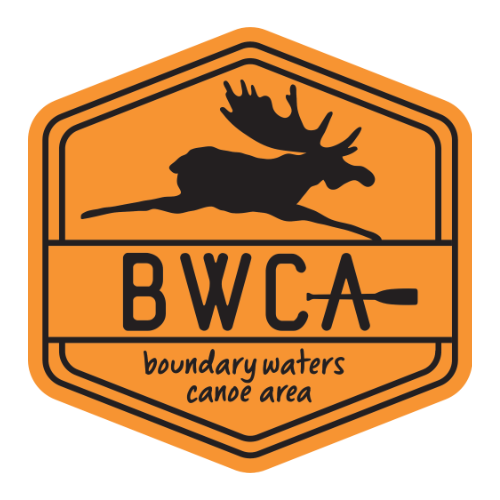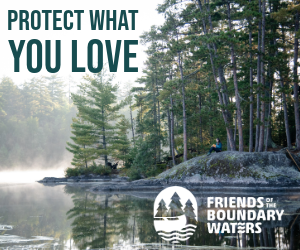|
 Boundary Waters Quetico Forum
Boundary Waters Quetico Forum Quetico Forum Quetico Forum Quetico Question Quetico Question
|
Author
Text
06/28/2018 06:26PM
Howdy,
First time poster. I'm looking through the Quetico Regs and found this. (I cut out the parts that I don't have questions about:
Canoe/Kayaks: Canadian Boating Safety regulations require:
One buoyant heaving line no less than 15 m (49’3”) in length
One bailer or one manual water pump fitted with or accompanied by sufficient hose
Is this for real?
Thanks,
PG
First time poster. I'm looking through the Quetico Regs and found this. (I cut out the parts that I don't have questions about:
Canoe/Kayaks: Canadian Boating Safety regulations require:
One buoyant heaving line no less than 15 m (49’3”) in length
One bailer or one manual water pump fitted with or accompanied by sufficient hose
Is this for real?
Thanks,
PG
Reply
Reply with Quote
Print
Top
Bottom
Previous
Next
06/28/2018 07:35PM
Yes we carry a 50 ft rope throw bag and a 1 gallon plastic jug with the bottom cut off it for bailing. I gave it tied to my stern seat with some cord.
"Rivers know this: there is no hurry. We shall get there someday.” ~A.A. Milne
06/28/2018 09:10PM
Read a bit more:
"Safety Equipment Requirements
Boats licensed or registered in a country other than Canada
Foreign boats (those that are licensed or registered in a country other than Canada) need to comply with the equipment requirements of the country in which the boat is usually kept."
Page 57 of Safe Boating Guide - Transport Canada
butthead
"Safety Equipment Requirements
Boats licensed or registered in a country other than Canada
Foreign boats (those that are licensed or registered in a country other than Canada) need to comply with the equipment requirements of the country in which the boat is usually kept."
Page 57 of Safe Boating Guide - Transport Canada
butthead
"never underestimate the power of stupid people in large groups" George Carlin
06/28/2018 09:47PM
Read a bit more down to the note...
"Note 3 – Bailer and Manual Bilge Pump
A bailer or manual bilge pump is not required for a boat that cannot
hold enough water to make it capsize or a boat that has watertight
compartments that are sealed and not readily accessible."
So if your canoe has sealed bow and stern pockets, you do not need a bailer.
Northern Tier up there uses canoes like that. You need a throw line, but not a bailer...also notice that it doesn't state what a bailer is....you could probably make the case that your Nalgene is your emergency bailer.
"Note 3 – Bailer and Manual Bilge Pump
A bailer or manual bilge pump is not required for a boat that cannot
hold enough water to make it capsize or a boat that has watertight
compartments that are sealed and not readily accessible."
So if your canoe has sealed bow and stern pockets, you do not need a bailer.
Northern Tier up there uses canoes like that. You need a throw line, but not a bailer...also notice that it doesn't state what a bailer is....you could probably make the case that your Nalgene is your emergency bailer.
06/28/2018 10:51PM
PG—Butthead has it right. We do not need to comply with those regs. I’ve been checked several times never needed those items as a non-resident.
T
T
“Many go fishing all their lives without knowing that it is not fish they are after.” Henry David Thoreau
06/28/2018 11:49PM
I've always been curious about the requirement for a bailer....if only for Canucks.
If the seas are so heavy that water is filling the boat, I can't imagine putting down the paddle to try to bail out the boat. Maybe it's a good idea to carry one, and I'm no expert in such things, but would it be a good idea in such a condition to have one of the paddlers start bailing (vs. paddling for whatever relief is possible)?
If the seas are so heavy that water is filling the boat, I can't imagine putting down the paddle to try to bail out the boat. Maybe it's a good idea to carry one, and I'm no expert in such things, but would it be a good idea in such a condition to have one of the paddlers start bailing (vs. paddling for whatever relief is possible)?
06/29/2018 06:02AM
Having a bailer is definitely a good idea.
I have been in a few canoeing situations where a bailer was necessary.
Is it able to save a solo canoeist in high winds? I am not sure. Previous experience and common sense probably are much better tools for that end.
I have been in a few canoeing situations where a bailer was necessary.
Is it able to save a solo canoeist in high winds? I am not sure. Previous experience and common sense probably are much better tools for that end.
06/29/2018 07:46AM
carmike: "I've always been curious about the requirement for a bailer....if only for Canucks.
If the seas are so heavy that water is filling the boat, I can't imagine putting down the paddle to try to bail out the boat. Maybe it's a good idea to carry one, and I'm no expert in such things, but would it be a good idea in such a condition to have one of the paddlers start bailing (vs. paddling for whatever relief is possible)? "
Great question, I never really thought about it before...I am certainly no expert but I have about 30 extended paddling trips...some in very wet rough weather and I can never remember a time where I thought “hey wish I had a bailer”...so I don’t get their use.
When I first started I used to see people hauling sponges in their canoe...actually I ended up picking up a lot of sponges on portages so technically I hauled a lot of sponges, but in my case they were thrown away in the garbage upon leaving the BWCAW. Never understood that either? Obviously weren’t that important because of how many were left behind and I rarely see them now so their use seems way down.
T
“Many go fishing all their lives without knowing that it is not fish they are after.” Henry David Thoreau
Reply
Reply with Quote
Print
Top
Bottom
Previous
Next
Subscribe to Thread
Become a member of the bwca.com community to subscribe to thread and get email updates when new posts are added. Sign up Here










 Search BWCA.com
Search BWCA.com
 Donate
Donate 